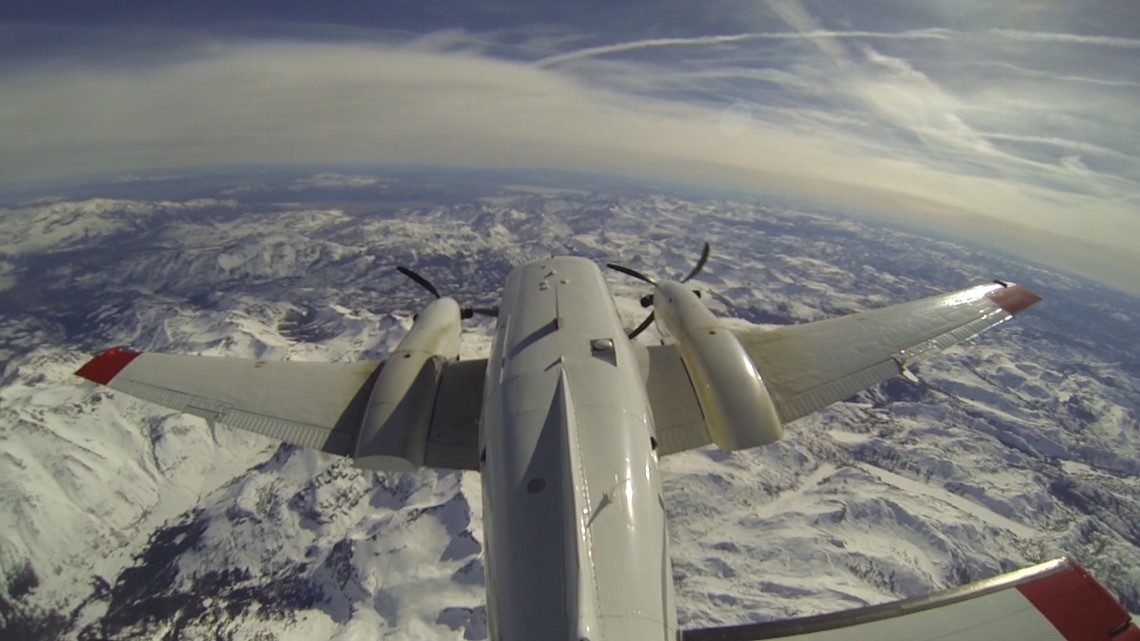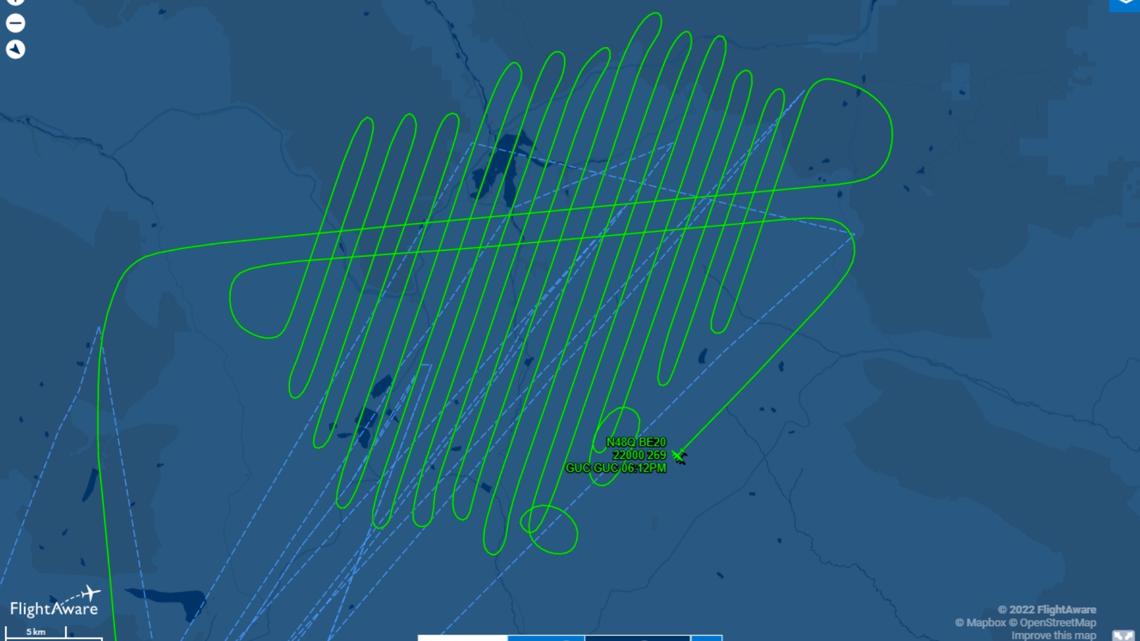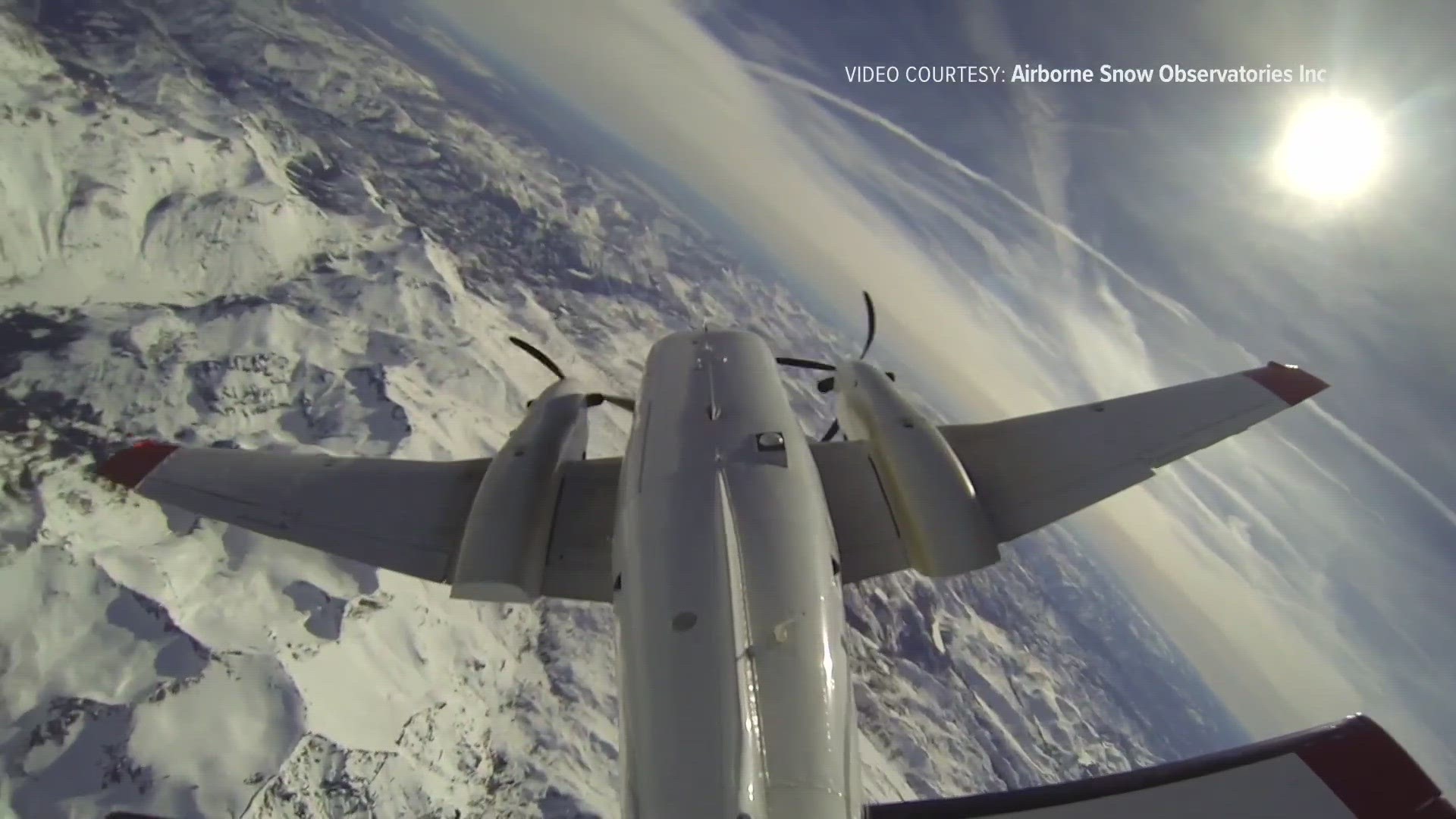DENVER — Scientists are now using airborne laser systems to measure Colorado snowpack.
The Airborne Snow Observatory (ASO) uses a lidar-based instrument to shoot lasers down to the snow.
“Those lasers bounce off the snow and back to the plane, and with that you can get a measurement of how deep the snowpack is," said Taylor Winchell, a senior water planner with Denver Water. "And this is with an accuracy and a resolution that we have never seen before in snow measurement technologies.”
Winchell said ASO is a private company born out of a former NASA research project. Now, Denver Water and other water districts in Colorado have been hiring the program to help deliver more accurate snowpack measurements.


He said with ASO, they’re able to get a snow depth measurement about every 10 feet, whereas traditional mountain weather stations can be spaced 5 to 10 miles apart or more.
ASO can also measure high elevation snowpack between 11,000 and 14,000 feet. Mountain weather stations are limited to the middle elevations because of the difficulties that come with maintaining weather stations in those harsh environments.
“And so, when the snowpack starts melting, those essentially go blind because only the high elevation snowpack remains,” he said. "There's a huge amount of snowpack up high that we just haven't been able to measure accurately until now."


Winchell said that part of ASO's ability proved valuable in 2019, when Denver Water first ran a pilot program with the airborne lidar.
There was a tremendous amount of late spring snow at high elevation that season that went virtually unaccounted for in their streamflow forecasts. A flight by ASO revealed over 100,000 acre-feet of snow was still available to melt.
He said Denver Water was able to respond by lowering their reservoirs to prepare to capture that snowmelt, which reduced the possibility of downstream flooding.


By combining ASO’s data with snow density measurements made by field crews, along with the water content measurements of the automated mountain weather stations, he said the runoff estimates this year will be far superior to previous years.
“Our snowpack is our largest reservoir here in Colorado, so being able to measure that accurately is the most important thing we can do as a water management community.”
Denver Water is just one of a handful of utilities and water districts using ASO this year, but there is a plan in the works that would allow the entire state to get these types of measurements in the future.
More reporting by Cory Reppenhagen:
SUGGESTED VIDEOS: Colorado Climate

